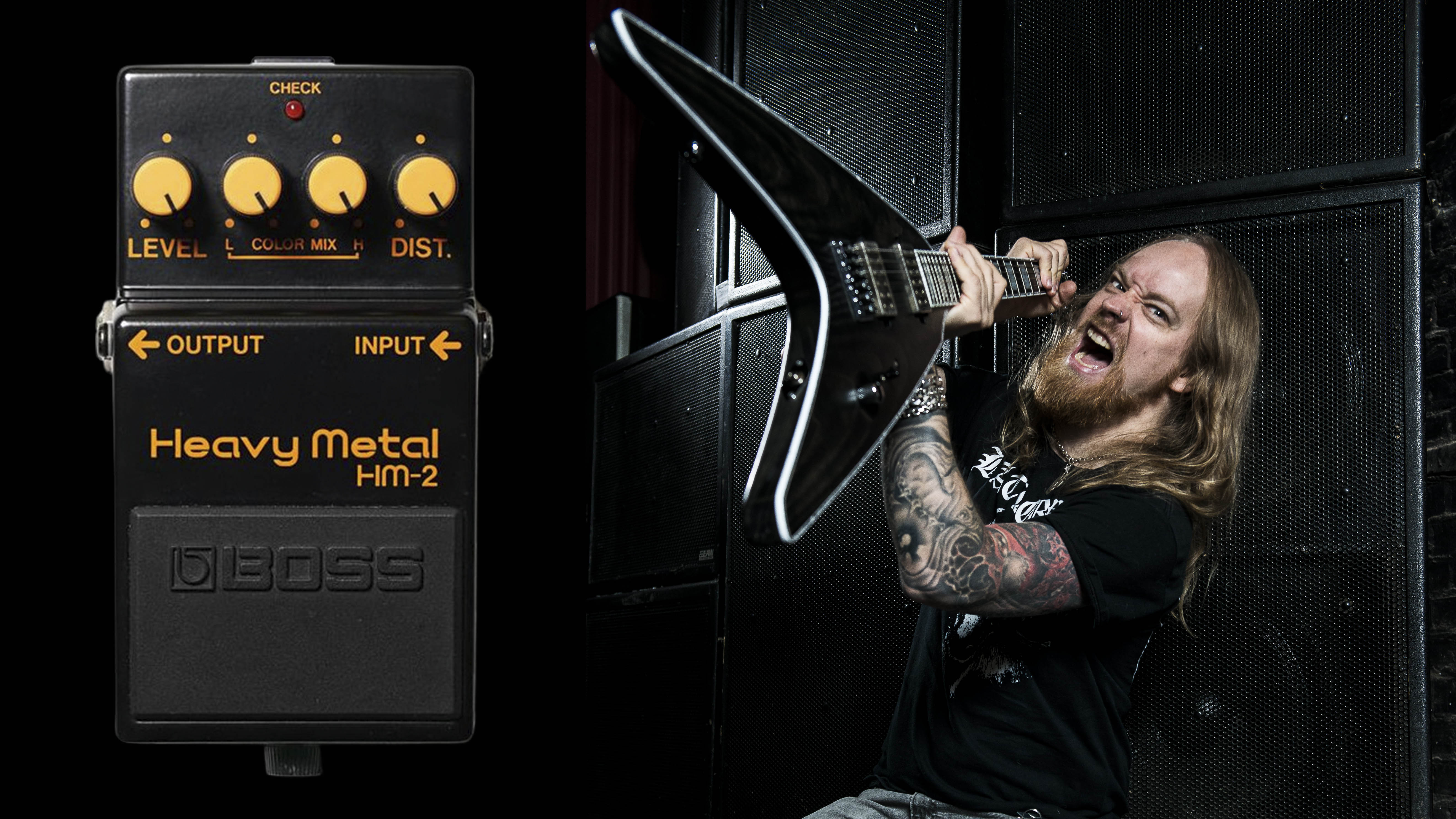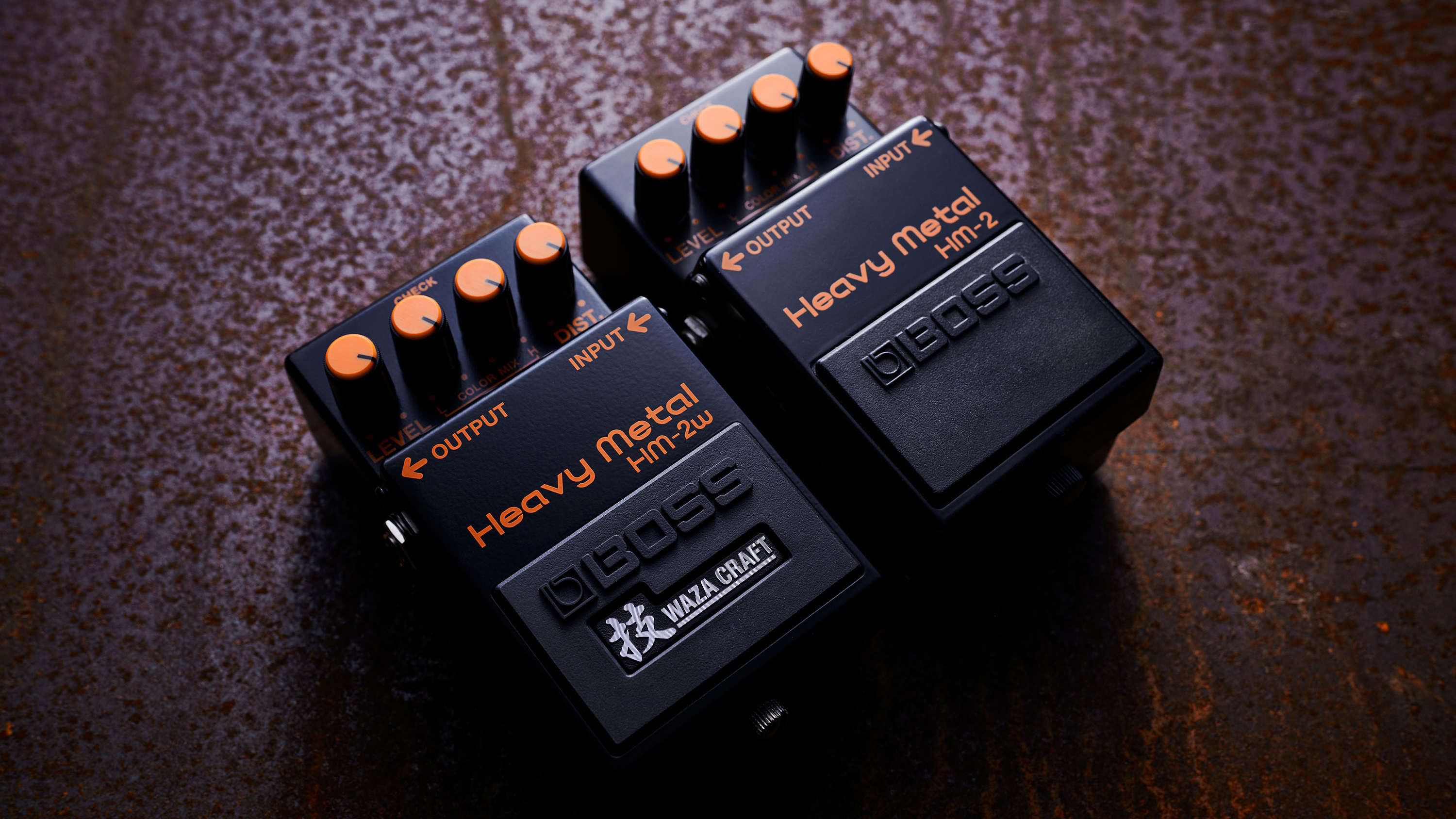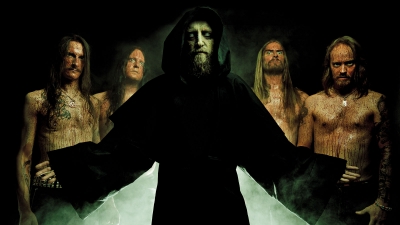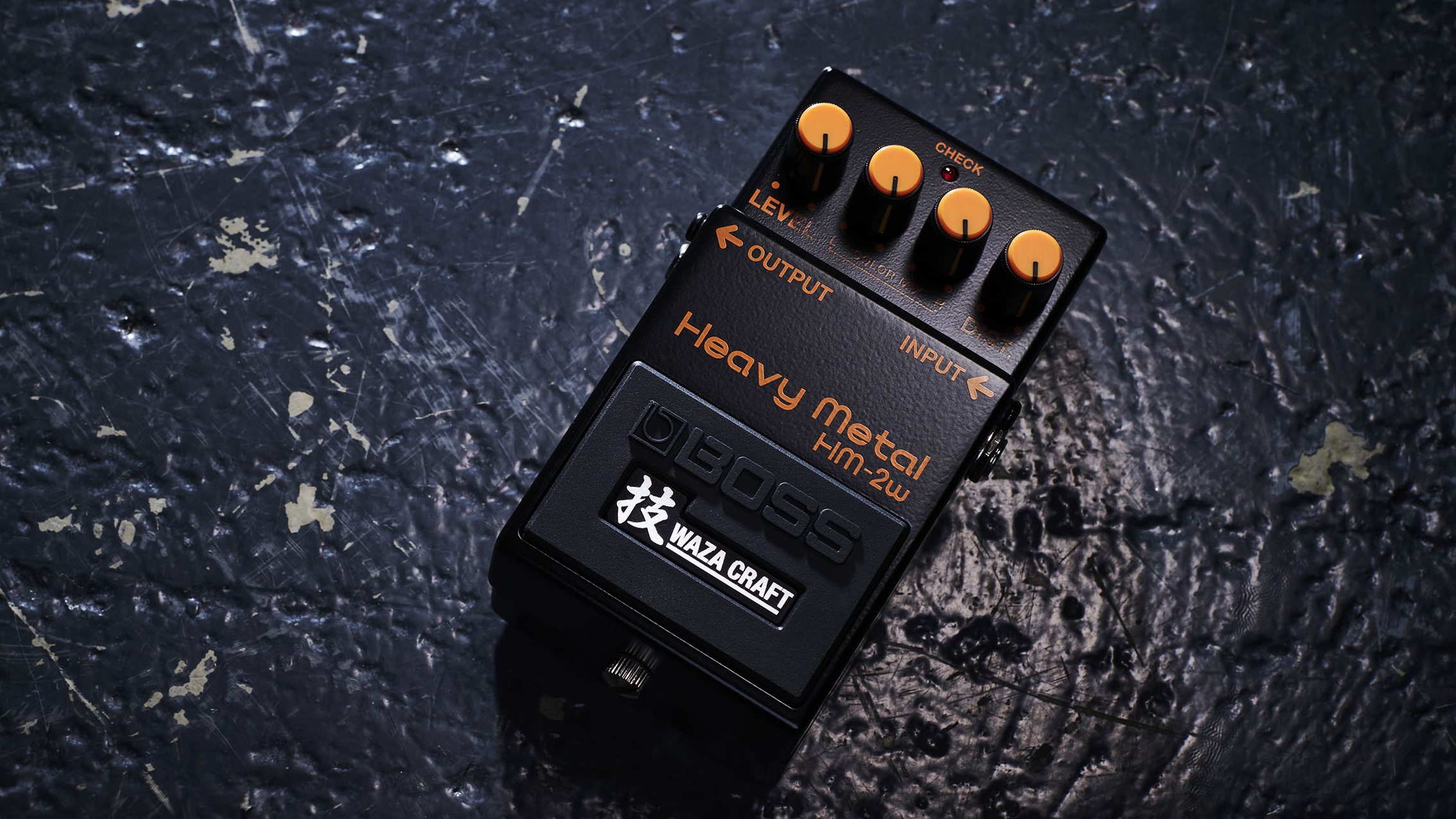
We can't think of a single other distortion pedal that has played a key part in a whole music scene. The Boss Heavy Metal HM-2 is a rare thing indeed and its role in Swedish death metal helped define its distinct sound. Yet somehow, the same pedal that was used for such brutal tones was also in David Gilmour's touring rig at one point. It's a special pedal – no wonder Boss are bring it back in a new and enhanced Waza Craft HM-2W edition.
We recently paid tribute to the best tones of sister pedal, the Boss MT-2 that's celebrating 30 years and over one million sales with a special anniversary MT-2-3A edition. Now as we hail the HM-2's return, who better than Katatonia / Bloodbath guitarist Anders Nyström to discuss its legacy so far. A versatile player who is just as happy creating ethereal prog as he is classic Swedish death metal tones…

We failed to realise that the HM-2 was supposed to hit the preamp and colour the dirty channel to unlock the real chainsaw buzz!
When did you first hear about the BOSS HM-2?
Anders Nyström: "I first saw it pictured in an '80s Boss pedal catalogue and thinking how cool that it was exclusively made for playing heavy metal, but ironically it would rather turn out to be the most iconic pedal for Swedish death metal based out of Stockholm later on. I’m pretty certain it wasn’t until Entombed’s Left Hand Path – the holy grail of all Swedish death metal albums, by the way – came out that we learned they’d used the HM-2 to achieve that ultra-brutal distortion with a striking resemblance to the sound of a chainsaw.
"When we got our hands on one, we plugged it in straight into a clean channel like you would do with any other distortion pedal and although it had every knob maxed out, it sounded ok, but nowhere near Entombed’s ravaging tone. Something was missing and we couldn’t figure it out as we failed to realise that the HM-2 was supposed to hit the preamp and colour the dirty channel to unlock the real chainsaw buzz!
"Instead, I kept using a DS-1 as my main pedal until a couple of years later when Boss released a brand-new pedal called MT-2 (Metal Zone) and it rose to dominate the stomp box market. Unlike the older pedals, it had plenty of high-gain, tons of sustain, plus a more versatile EQ filter which landed the pedal on many early-mid 90s recordings/gigs and kind of put the HM-2 in the shadow for a while, unless you were in Entombed or Dismember that kept their one-of-a-kind recipe to themselves all along."
I’ve not come across any other pedal and amp combination that can beat this sound in terms of brutality
How important was it to the Swedish death metal scene at the time? Can its importance be overstated?
Want all the hottest music and gear news, reviews, deals, features and more, direct to your inbox? Sign up here.
"The pedal has played a huge role although there was no 'hype' about it back in the day compared to what we can see happening now. Second-hand original pedals continue to sell like butter on auction sites. There’s Facebook groups dedicated to worshipping the pedal and everything related to it. I’ve seen lots of unofficial merch on the brand pop up and it even seems that people decided the HM-2 now founded its own sub-genre within death metal.
"All of the above probably made Boss realise the level of demand they’ve achieved with the pedal. Most importantly, it helped create the whole identity for Entombed and put the classic sound of Stockholm death metal on the worldwide map as we know it. Still to this day, I’ve not come across any other pedal and amp combination that can beat this sound in terms of brutality."
What is it about this particular pedal that makes it so special for death metal tone?
"When something manages to simulate the sound of a chainsaw and at the same time gives you the instant ability to make music with it… I mean, can it get more death metal than that!?! Even a straight E-chord ringing out sounds so heavy and intense that it’ll make me go, 'Wow, that’s a killer riff', it’s ridiculous ha-ha!
If you max out everything on both the amp and the pedal, the sound will literally crush itself and cave-in
What are the optimum settings on the pedal for the iconic tone?
"Well, what really pushes the sound into extreme territory is the upper curve of the high colour (EQ) knob, that’s where the chainsaw lives and that must be maxed out! The low colour (EQ), level and distortion knobs depend on how you set the corresponding parameters on the amp. It’s all about making the pedal feed and overdrive the amp without going too far drowning in saturation.
"If you max out everything on both the amp and the pedal, the sound will literally crush itself and cave-in. Also, I know some people (like myself back in the day) max out everything on the pedal while plugging straight into a clean channel thinking that must be the ideal setup, but that will NOT give you the ultimate iconic tone, it’s crucial to make the pedal colour and hit some low gain of the preamp. Doing it backwards can actually help you achieve a great tone and keep things controlled and more playable.

"Step #1, start with dialling in a good, but low-mid gain overdrive sound on the amp, think “dad rock” resulting in weak palm muting or very little chug' as they say, and settle for a sustain that Keith Richards would think is metal, that’s a perfect foundation to later overdrive into chainsaw territory.
"Step #2, plug the HM-2 in the front of the amp with the colour knobs turned to max and slowly increase the distortion and level knobs until you hear the sound transform and the chainsaw kicks in. There’s no need to increase the distortion or level beyond that point, because there’s a small sweet spot where playability enables palm mutes to feel sharp and tight, chords will ring for miles with sustain and tremolo riffs will not turn into a beehive of only amplified picking noise."
We usually track three rhythm guitars with two tracks panned fully left and right using the HM-2.
How do you use one in Bloodbath – combined with other pedals - ie Boss DS-1?
"Whenever we’re in the studio to record, we always plug it in front of an amp (we’ve experimented with most brands and the pedal works on almost anything, but it’s all down to personal preferences) and fine tweak the balance between the pedal and the amp from there.
"We usually track three rhythm guitars with two tracks panned fully left and right using the HM-2. Then we place a third track in the centre which can be based on a DS-1 or just a preamp with slightly less gain that will add some clarity to the HM-2 stereo monster. The centre track usually starts the riffs while the stereo tracks accentuate everything with the rest of the instruments and when everything kicks in together, the three guitar tracks fill a wider spectrum and that centre track helps articulates the tonality.
"However, when playing live, I always use a multi-effects processor. I insert the HM-2 in its send/return loop and integrate it in the internal FX chain where I utilise only digitally modelled preamps and cabs. I’ve been using floor boards (BOSS GT-series) for decades now and always wondered how come Boss didn’t include the HM-2 as a digital option in their flagships. Luckily, a few years ago it finally appeared in a software update which gave me the freedom to retire the good ol’ physical stomp box and entirely stay inside the digital FX chain while operating every parameter from within one and the same compact unit.
"So, from the guitar jack I have a lead to a belt pack transmitter (Line6 TBP 12G) that sends the signal wireless to a relay (Line 6 G50) which is plugged into the input of my multi effects processor (Boss GT-1000) that runs into a small pedal-sized power amp (Seymour Duncan PowerStage 170) which gives me the freedom to feed the signal straight into any cab. I no longer have to worry about plugging into amps I know nothing about. I can actually eliminate the need of an amp from the rig entirely.
"Alternatively, I could scrap cabs as well and just go direct out from my processor to FOH/PA or I could run both paths even at the same time. I’ve programmed the GT-1000 so that all my sounds, levels and FX are consistent and customised for each song in our library, so that saves me a ton of work as I can just copy and paste each song into a chronological setlist. Truth is that live shows, especially festivals, can get crazy stressful, so keeping the gear as streamlined as possible and having a “plug and play” mentality counteracts most of the troubleshooting in the changeover chaos."
Are there any things you’d like to see improved / changed on the pedal?
"I’m sure there are improvements that can be done to a pedal that was invented four decades ago since technology evolve and components are updated all the time, but personally I don’t feel the need to see any particular changes as I got no problem to use everything in my FX chain to tame the pedal and make it sound great for Bloodbath.
"I know the purists just want everything to be left untouched, but there were also suggestions made for the Waza Craft model to get new features like an improved noisefloor, a wider EQ range, a clean blend etc I don’t know what Boss decided for the final retail version, but worth to mention is that there’s been other boutique pedal companies offering clones that actually could do all that stuff already, like Lonewolf’s Left Hand Wrath and Decibelics Angry Swede pedals among others.

Are you open to trying the new Waza Craft HM-2W edition with added features or would you want to keep it old school?
"I might pick one up at some point as I could see it being used in the studio, but I don’t see a valid reason of going back using the stomp box live as long as I got Boss own digital version implemented in my multi effect floor board. I can’t be bothered what’s considered true, real and old school if I can get a good result and no one can even tell the difference whether I use a physical HM-2 made in Japan back in 1983 or a digitally modelled version made in 2019 by the same company, that’s the end of story for me.
It’s funny what guitar pedals and power tools can have in common when it comes to sound preferences in extreme metal
Have you ever used one with Katatonia or for tones other than death metal?
"Yes! As a matter of fact, we incorporated a HM-2 as the main distortion pedal for the rhythm guitars on the entire Brave Murder Day album released back in 1996. It may not appear to sound that obvious since the knobs weren’t dimed out that time because we weren’t going for the full-on chainsaw buzz.
"I actually have notes and conversations of us using the Swedish word “borr”, which would be “drill” in English, when describing our vision of the guitar sound, so we were chasing another power tool that time haha! It’s funny what guitar pedals and power tools can have in common when it comes to sound preferences in extreme metal."
The Boss Waza Craft HM-2W is available for preorder now. More info at Boss. Katatonia's rarities and b-sides collection Mnemosynean is released on October 1 to celebrate their 30th anniversary. For more details visit Katatonia.
The band will also tour the UK and mainland Europe in January and February 2022.

Rob is the Reviews Editor for GuitarWorld.com and MusicRadar guitars, so spends most of his waking hours (and beyond) thinking about and trying the latest gear while making sure our reviews team is giving you thorough and honest tests of it. He's worked for guitar mags and sites as a writer and editor for nearly 20 years but still winces at the thought of restringing anything with a Floyd Rose.